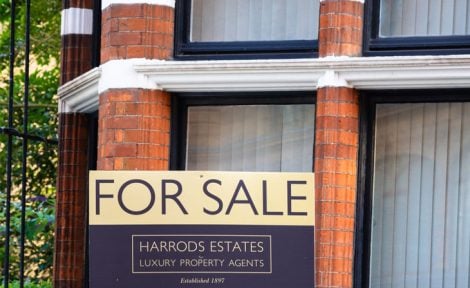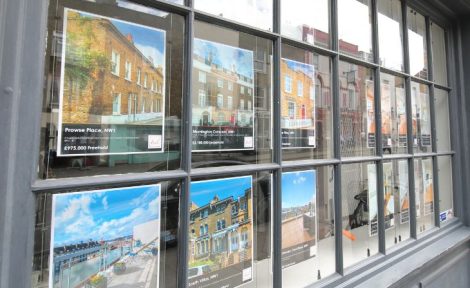AGENT BLOG: The ‘light at the end of the tunnel’ moment has not yet arrived
Knight Frank’s Tom Bill says that while Nationwide reported a -5% fall in house prices average prices in prime central London declined by just 1.4%.

The traditional summer lull in the property market felt particularly noticeable this year. Beyond the fact it was holiday season an inconclusive set of inflation numbers in August raised doubts about how high interest rates would remain and ensured sentiment stayed firmly in check.
The light at the end of the tunnel moment has not yet arrived.
UNCERTAINTY
While the prime London market has been affected by the uncertainty of the past 12 months, it has been less marked than many areas of the UK.
For example, while the Nationwide UK index fell below -5% in the year to August, average property prices in prime central London declined by 1.4%. In prime outer London, the fall was -0.8%.
There was even a 1.3% rise in Knightsbridge, an area affected disproportionately during the pandemic by international travel rules and the fact it is largely an apartment market. The strongest annual growth in August was recorded in Dulwich (3.6%), as buyers continued to look for space and greenery in an area that is relatively more affordable than equivalent prime locations in south London.
The number of exchanges in London during July and August was 15% above the five-year average, while the figure was down by 4% across the whole country.
The fact prices across the capital were subdued compared to other parts of the UK during the pandemic has certainly helped support activity as I explored last month.
CASH BUYERS
 A higher proportion of cash buyers has also played its part. Prices are still 16% below their last peak in prime central London, while the figure is 8% in prime outer London.
A higher proportion of cash buyers has also played its part. Prices are still 16% below their last peak in prime central London, while the figure is 8% in prime outer London.
For UK mainstream prices and the Country House market, prices are still coming down from a more recent high point.
The economic backdrop should stabilise over the next 12 months and downwards pressure on mortgage rates will remain as lenders compete for business in a lower-volume market.
That said, the political temperature will rise next year as the general election approaches.
Labour, which has a commanding poll lead, has ruled out introducing rent controls as well as a wealth tax, which provides a degree of certainty for high-net-worth individuals.
However, until the details of both parties’ manifestos are revealed all eyes will remain on the Bank of England.
DECLINING RENTAL VALUE GROWTH
Elsewhere, rental value growth in prime London postcodes continued to decline in August as supply built and demand cooled. More owners are opting to let out their property due to the weakness in the sales market caused by rising mortgage rates. Meanwhile, demand has dipped over the summer for reasons that include the lower number of Chinese students choosing to attend university in the UK.
As a result, average rental value growth in prime central London (PCL) fell to 12.4% in the year to August, which was the lowest level since September 2021. In prime outer London (POL), the figure was 11.5%, the weakest it has been since October 2021.
HISTORICAL STANDARDS
While the strong rental value growth of recent years has calmed down, it’s still high by historical standards. To put last year’s growth into perspective in prime central London, average rents grew by 15.6% in the 10 years leading up to the pandemic. In prime outer London, the annual growth rate in August exceeded the rise of 11% seen during the decade prior to the pandemic.
 The number of new lettings listing in the capital was 13% below the five-year average (excluding 2020) in August, Rightmove data shows. That compares to a decline which was closer to a third during most of last year. Meanwhile, the number of new lettings applicants was equal to the five-year average, after spending most of 2022 more than 50% higher, as the chart shows.
The number of new lettings listing in the capital was 13% below the five-year average (excluding 2020) in August, Rightmove data shows. That compares to a decline which was closer to a third during most of last year. Meanwhile, the number of new lettings applicants was equal to the five-year average, after spending most of 2022 more than 50% higher, as the chart shows.
One of the reasons is that the number of Chinese students has dipped this year. UK universities may have reached ‘peak china’ according to the head of the Universities and Colleges Admissions Service, for reasons that include recent visa and tax changes.
The re-balancing taking place in prime London markets is largely due to the more discretionary position of owners. It has not happened outside of London, where there is still strong upwards pressure on rents which rose at their highest rate since 2016 last month.
Tom Bill (main picture) is head of UK residential research at Knight Frank
Picture: LondonProperty.co.uk










